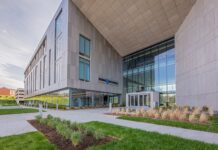
A new initiative has been launched to help accelerate the drive towards building a low carbon future for the north of Scotland.
The partnership between public and private sector organisations has been tipped to pave the way to using low carbon construction solutions to tackle issues such as the housing crisis while helping to meet national policy aims around net zero carbon emissions, place-making and ensuring economic outcomes benefit everyone.
Leading the move is Hub North Scotland, with two collaborators: Built Environment – Smarter Transformation (BE–ST), Scotland’s national centre for the built environment, and the Innovation School at Glasgow School of Art (GSA).
The three have worked together to develop a three-strand programme for the Hub North Scotland territory, which stretches from Argyll and Bute in the west to Orkney and Shetland in the north and Aberdeen in the east, and includes 16 local authorities, health boards as well as the police, fire, and ambulance services.
The three strands – leadership, learning, and low carbon construction – will be used to bring together the public and private sector to establish how to meet net zero carbon planning challenges, and do so in ‘new and innovative’ ways.
Under the leadership strand, senior officials from the 16 public sector organisations are taking part in a Leadership Workforce programme. GSA is also holding a low carbon construction programme for building contractors and the public sector officials.
Both programme groups will work together to use a design-led approach to identifying opportunities and solutions for tackling the challenges of adopting low carbon construction methods.
The third strand has seen BE-ST bring its Low Carbon Learning: Next Gen programme for schools and further education centres to the Hub North Scotland territory through a series of workshops in locations such as Lochgilphead, Inverness, Shetland, and Moray over the next three months.
Next Gen is designed to give 13-24-year-olds experience covering training on areas such as modern methods of construction, digital construction, Passivhaus energy efficient buildings and retrofitting existing buildings.
BE-ST has also compiled a resource guide for teachers and educators to support student and apprenticeship development. The guide contains content on sustainable and net zero methods, gives examples of best practice, identifies routes into industry experience, and highlights resources available.
Paul McGirk, executive chairman of Hub North Scotland, said, “We need greater collaboration to create a net zero carbon infrastructure in the built environment, not just in the Hub North Scotland territory but also across the whole of Scotland. By working with BE-ST and GSA, we are giving our public sector partners the opportunity to look together at new ways of doing this which will help them meet their requirements and at the same time unlock potential additional investment opportunities.”
Douglas Morrison, deputy CEO at BE-ST, added, “Innovation and collaboration are key to finding and embedding solutions to the net zero carbon challenge. Both the leadership and skills workshops will create opportunities for these two critical drivers to take shape and accelerate progress in a unified way.”







